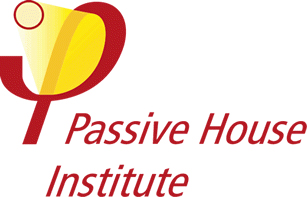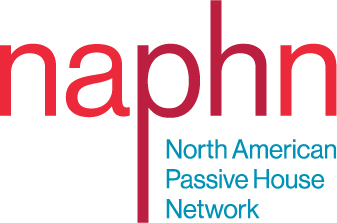Evaluation of efficiency takes place according to renewable primary energy system
(Press Release, Passive House Institute, 19 March 2015)
[Note: See GreenBuildingAdvisor report on the new certification standards here.]
“Darmstadt, Germany. Renewable energy is the ideal complement to the efficiency of the Passive House Standard. In order to provide reliable guidance for this combination, the Passive House Institute introduces two new categories for its building certification; in addition to the established Passive House Classic, there will be the Passive House Plus and Passive House Premium classes as well. A new evaluation procedure which also considers energy generation by the building itself will serve as a basis for this. The exact certification criteria and calculation details according to the renewable primary energy (PER) system are available on the online resource Passipedia. What these new features mean in practice will be further discussed at the International Passive House Conference, which will take place on 17-18 April 2015 in Leipzig.
The heating demand of a Passive House may not exceed 15 kWh/(m²a). This will continue to apply, but with the introduction of the new categories, the overall demand for renewable primary energy (Primary Energy Renewable) will be used instead of the primary energy demand, which was previously used. In the case of the Passive House Classic category, this value will be 60 kWh/(m²a) at the most. A building built to Passive House Plus is more efficient as it may not consume more than 45 kWh/(m²a) of renewable primary energy. It must also generate at least 60 kWh/(m²a) of energy in relation to the area covered by the building. In the case of Passive House Premium, the energy demand is limited to just 30 kWh/(m²a), with at least 120 kWh/(m²a) of energy being generated.
“The demand of heating energy is greatly reduced in a Passive House; therefore the consumption for hot water and domestic electricity is all the more significant. In the new evaluation, this is taken into account in a meaningful and future-oriented way”, says Dr. Wolfgang Feist, Director of the Passive House Institute. The new evaluation procedure anticipates the energy transition and considers the building in an environment where only renewable energy is used. “Due to the low consumption of a Passive House, such a scenario is easily attainable”, says Feist.
The sun and wind provide primary electricity. Some of this electricity can be used directly. However, storage capacities are necessary for transferring surplus energy to time periods with lower energy gains. These supply secondary electricity as required, and this is associated with losses. Depending on the type of energy application, the proportion of primary and secondary electricity varies, as do the losses for providing energy. These specific energy losses of an energy application are described as the respective PER factor. The demand for domestic energy is quite constant throughout the year, which is why the share of direct electricity is high and the PER factor is low. In contrast with this, heating is necessary only in winter. In order to provide enough energy in winter, electricity must in part be produced in summer and stored with very high losses for the winter, which results in a high PER factor.
At the International Passive House Conference 2015 in Leipzig, using specific examples, scientists from the Passive House Institute will demonstrate the implications of the new Passive House categories and the PER system for project planning. Dr. Benjamin Krick will calculate which specific energy related optimisations would be necessary in order to achieve the new Passive House categories for some existing buildings. Jessica Grove-Smith will show how the PER factors were developed for the newest version of the tried and tested planning tool PHPP (Passive House Planning Package).
Over a third of the total energy consumed in developed countries is required for operating buildings, especially to heat them. This consumption can be reduced by up to 90 % using Passive House technology, and the remaining demand can be met sustainably using renewable energy. Hence, the Passive House Standard isn’t just an attractive solution for the energy transition; with the introduction of the new categories Passive House Plus and Passive House Premium, it is also a blueprint for the Nearly Zero-Energy Building stipulated in the European Buildings Directive, which will come into effect in 2021.
The International Passive House Conference organised by the Passive House Institute has been taking place at different venues since 1997. The 2015 Conference is being organised in cooperation with the City of Leipzig, the Chamber of Architects in Saxony and the University of Innsbruck. Some of the lectures also form part of the EU-funded projects EuroPHit and PassREg. The Conference is being held under the auspices of the German Federal Minister for Economic Affairs and Energy, Sigmar Gabriel.”

























